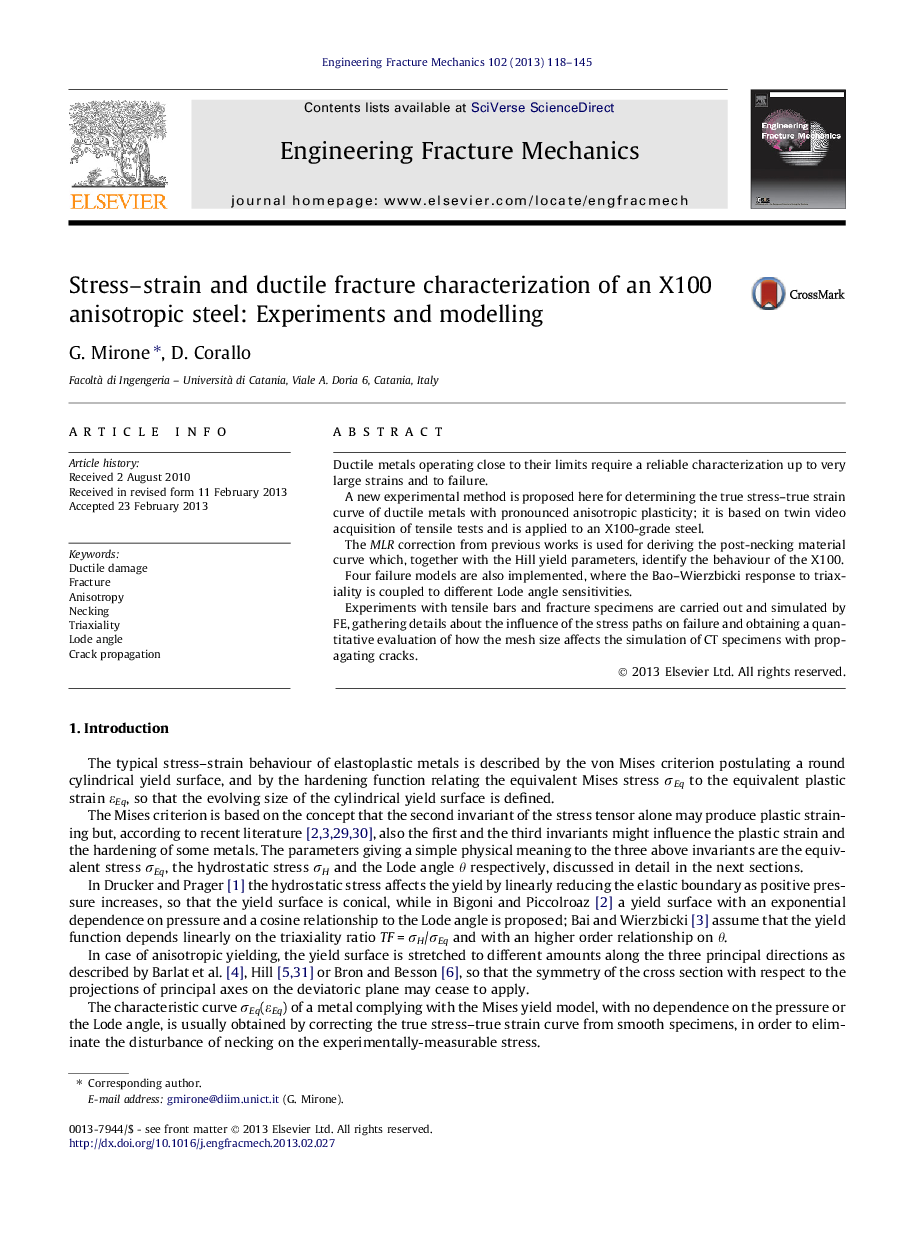| کد مقاله | کد نشریه | سال انتشار | مقاله انگلیسی | نسخه تمام متن |
|---|---|---|---|---|
| 770884 | 1463123 | 2013 | 28 صفحه PDF | دانلود رایگان |

• A new experimental method is proposed for the true curve of anisotropic materials.
• The MLR post-necking correction also applies to anisotropic materials.
• The Bao–Wierzbicki damage model also applies to anisotropic steels when Lode angle is 0.
• The ductility reduction due to the Lode angle is a function with variable curvature.
• Accurate crack growth and fracture FE prediction requires the modelling of the X effect.
Ductile metals operating close to their limits require a reliable characterization up to very large strains and to failure.A new experimental method is proposed here for determining the true stress–true strain curve of ductile metals with pronounced anisotropic plasticity; it is based on twin video acquisition of tensile tests and is applied to an X100-grade steel.The MLR correction from previous works is used for deriving the post-necking material curve which, together with the Hill yield parameters, identify the behaviour of the X100.Four failure models are also implemented, where the Bao–Wierzbicki response to triaxiality is coupled to different Lode angle sensitivities.Experiments with tensile bars and fracture specimens are carried out and simulated by FE, gathering details about the influence of the stress paths on failure and obtaining a quantitative evaluation of how the mesh size affects the simulation of CT specimens with propagating cracks.
Journal: Engineering Fracture Mechanics - Volume 102, April 2013, Pages 118–145